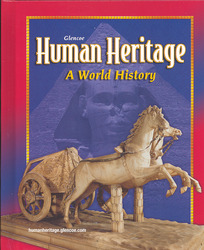Human Heritage: A World HistoryChapter 20:
The VikingsWeb Activity Lesson Plans“Who Were the Vikings?”Introduction
Students have read about the Scandinavian Vikings. In this exercise, students will learn more about how the Vikings lived and what they were like. Lesson Description
Students will use information from the “Vikings: North Atlantic Saga” Web site to learn more about the Vikings. Students will read about how the Vikings lived and where they traveled. Students will then answer four questions and apply this information by writing down the characteristics that were most important to the Vikings. Instruction Objectives
- Students will be able to describe Viking culture and how we know about the Vikings.
- Students will be able to use this knowledge to write an essay describing the characteristics that seem important to the Vikings.
Student Web Activity Answers
- They did not have a single culture. The Vikings held in common a loose assortment of shared ideas, economies, religious beliefs, and especially a common Germanic language known today as Old Norse. In that sense Viking culture was simply only one stage in the development of modern Scandinavian culture.
- An extremely ornate Viking ship was discovered containing a dazzling array of objects-beds, four sleds, an elaborately carved cart with twelve sacrificed horses, buckets filled with food, barrels and chests, intricate wooden carvings, and embroidered tapestries.
- He wanted to preserve the old Norse forms of poetry.
- Egil was a great Viking warrior, a poet, and a successful farmer and family man. His father had been exiled from Norway, and Egil went to great pains to antagonize the Norwegian king, Erik Bloodaxe, in retribution. After one such foray in Norway, Egil stopped in England and joined forces with King Athelstan, who was battling King Olaf of Scotland. Thanks in large part to Egil's skill on the battlefield, Athelstan emerged victorious. To commemorate the victory, Egil composed a poem which reads in part, “Even the highland deers' path belongs to mighty Athelstan now” (“highland deers' path” being a poetic reference to Scotland).
- Students' answers should draw on information from the Web site. Sample answers may include being heroic in battle and becoming wealthy through conquest.
 | 




